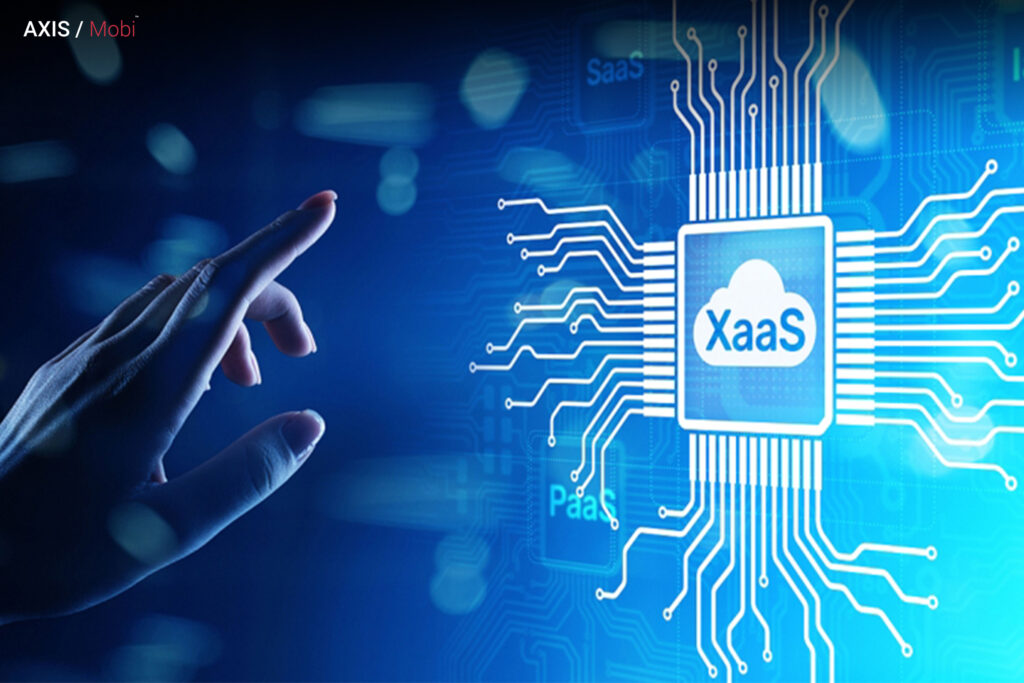Previously, only cloud computing technology existed, and various cloud service providers offered various cloud services to customers. However, a new concept has emerged, namely Everything as a Service (XaaS), which means that anything can now be a service with the help of cloud computing and remote access, where cloud computing technologies provide various types of services over the web networks. Everything as a Service makes multiple tools, technologies, and services available to users. Before Everything as a Service and cloud services, businesses had to buy licensed products and install them, secure their sites, and provide infrastructure for business purposes. Business is simplified with XaaS because they only pay for what they require. Everything as a Service is also referred to as Anything as a Service.
XaaS Examples–
Because XaaS stands for “Everything as a Service,” there are numerous examples. There are multiple cloud computing models, such as –

Many software applications, such as Google Apps and Microsoft Office 365, are available as SaaS. Similarly, PaaS provides access to AWS, Heroku, Apache Stratos, and other application development and testing sources. IaaS facilitates the deployment and management of virtual machines. IaaS also serve Azure and Google Computer Engine.
Examples of the Everything as a Service Model-

Hardware as a Service (HaaS):
Managed Service Providers (MSPs) provide and install hardware on demand at the customer’s site. The customer uses the hardware following service level agreements. This model is very similar to IaaS in that computing resources on MSP’s premises are provided to users in place of physical hardware.
Communication as a Service (CaaS):
This model includes communication solutions such as IM, VoIP, and video conferencing applications hosted in the provider’s cloud. This method is both cost-effective and saves time.
Desktop as a Service (DaaS):
A DaaS provider is responsible for storing, securing, and backing user data for desktop apps. A client can also work on PCs by connecting to third-party servers.
Security as a Service (SECaaS):
The provider integrates anti-virus software, authentication, encryption, and other security services with the company’s infrastructure via the internet.
Healthcare as a Service (HaaS):
The healthcare industry has chosen the HaaS service model via electronic medical records (EMR). IoT and other technologies have improved medical services such as online consultations, 24/7 health monitoring, medical assistance at the patient’s door, lab sample collection from home, and so on.
Transport as a Service (TaaS):
There are numerous apps available today that aid in mobility and transportation in modern society. The model is both practical and environmentally friendly, for example. In the future, Uber taxi services will test flying taxis and self-driving planes.
Advantages of XaaS-

Cost Saving: When an organization uses Everything as a Service, it saves money and simplifies IT deployments.
Scalability: XaaS can easily handle increasing workloads by providing the necessary resources/services.
Accessibility: It facilitates and improves accessibility as long as an internet connection is available.
Faster Implementation: It allows for more rapid implementation of various organizational activities.
Quick Modification: It offers updates for modification and undergoes rapid updating by providing high-quality services.
Better Security: It has improved security controls and is tailored to the business’s specific needs.
Increased innovation: Using XaaS streamlines operations and frees up resources for innovation.
Flexibility: Everything as a Service provides flexibility through the use of cloud services and a variety of advanced approaches.
XaaS Disadvantages-

Internet outages occur from time to time for XaaS service providers, and there may be issues with internet reliability, provisioning, and management of infrastructure resources.
Slowdown: When a large number of clients use the same resources at the same time, the system may slow down.
Difficult to Troubleshoot: XaaS can be a solution for IT staff in day-to-day operational headaches, but if a problem arises, it is more difficult to troubleshoot because Everything as a Service includes multiple services with various technologies and tools.
Change causes issues: When a XaaS provider discontinues or changes a service, it impacts XaaS users.
XaaS is becoming more popular:
Public cloud services are expanding at an exponential rate. Researchers estimate that global cloud computing revenue will reach $342 billion by 2025. Products and services are combined through the XaaS model by servitization, allowing businesses to innovate faster and improve their customer relationships, increasing revenue.
Future of XaaS:

A combination of cloud computing and high-speed internet access enables access to high-quality XaaS services and better XaaS improvement. Some businesses are hesitant to adopt XaaS due to security and business governance concerns. However, service providers are increasingly disclosing these concerns, allowing organizations to move additional workloads to the cloud.





Pingback: Overview of Everything as a Service (XaaS) | In...